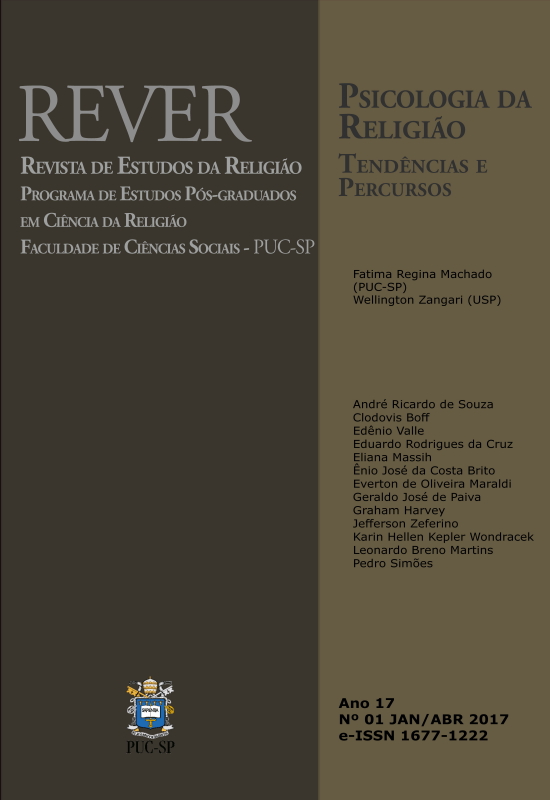From the Psychology of Attachment to the Neuroscientific View Proposed by Lee A. Kirkpatrick about the Human Religiosity
DOI:
https://doi.org/10.23925/1677-1222.2017vol17i1a3Keywords:
Lee Kirkpatrick, New Attachment Theory, Evolutionary Psychology, Neurosciences, Psychology of ReligionAbstract
Lee A. Kirkpatrick is an outstanding researcher of the Psychology of Religion. His importance as a researcher and theoretician was consolidated by his empirical research about the Theory of Attachment originally proposed by John Bowlby and Mary Ainsworth. As Bowlby and Ainsworth, Kirkpatrick was influenced by Konrad Lorenz’s Ethology and by the discussions of some famous British psychoanalysts about the relationship between babies and their mothers or caretakers in their first months of life. Kirkpatrick’s merit was the rigorous application of the theory of attachment to the study of human religiosity and other similar states of mind experienced not only by newborns. It is possible to distinguish two different stages in Kirkpatrick’s work. In the first stage his attention focused mostly on the attachment behavior of children regarding their mothers or caretakers. Later, parallel to the increment of the Biosciences, Neurosciences and Evolutionary Psychology, he focused on neurophysiological and psychological processes and mechanisms underlying child's psycho-behavioral reactions. The progressive theoretical change of Kirkpatrick's focus made him one of the most important researchers of the Psychology of Religion. This article aims to present Kirkpatrick's itinerary as a Psychology of Religion scholar.
Downloads
Published
Issue
Section
License
Authors who publish in this journal agree with the following terms:- Authors retain copyright, but grant the journal the right of first publication, with the work simultaneously licensed under the Creative Commons BY-NC License.
- Authors are authorized to assume additional contracts separately, for non-exclusive distribution of the work published in this journal (e.g., publishing in an institutional repository or as a book chapter), as long as with acknowledgment of authorship and first publication in this journal.


